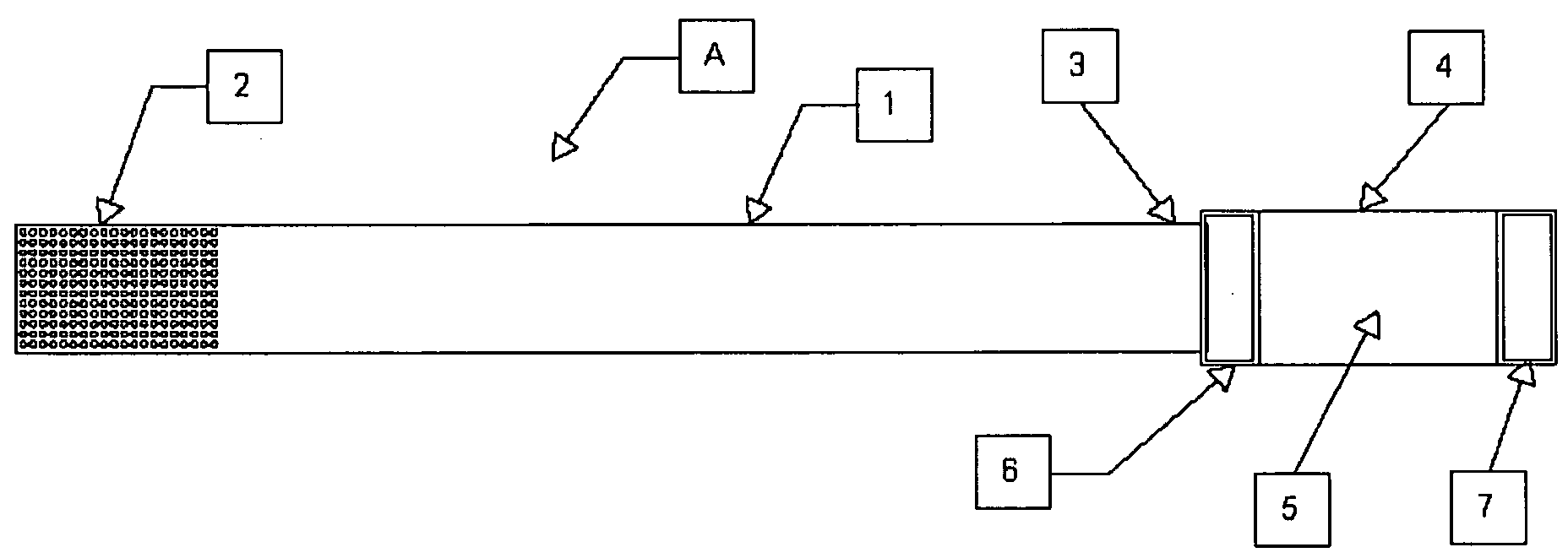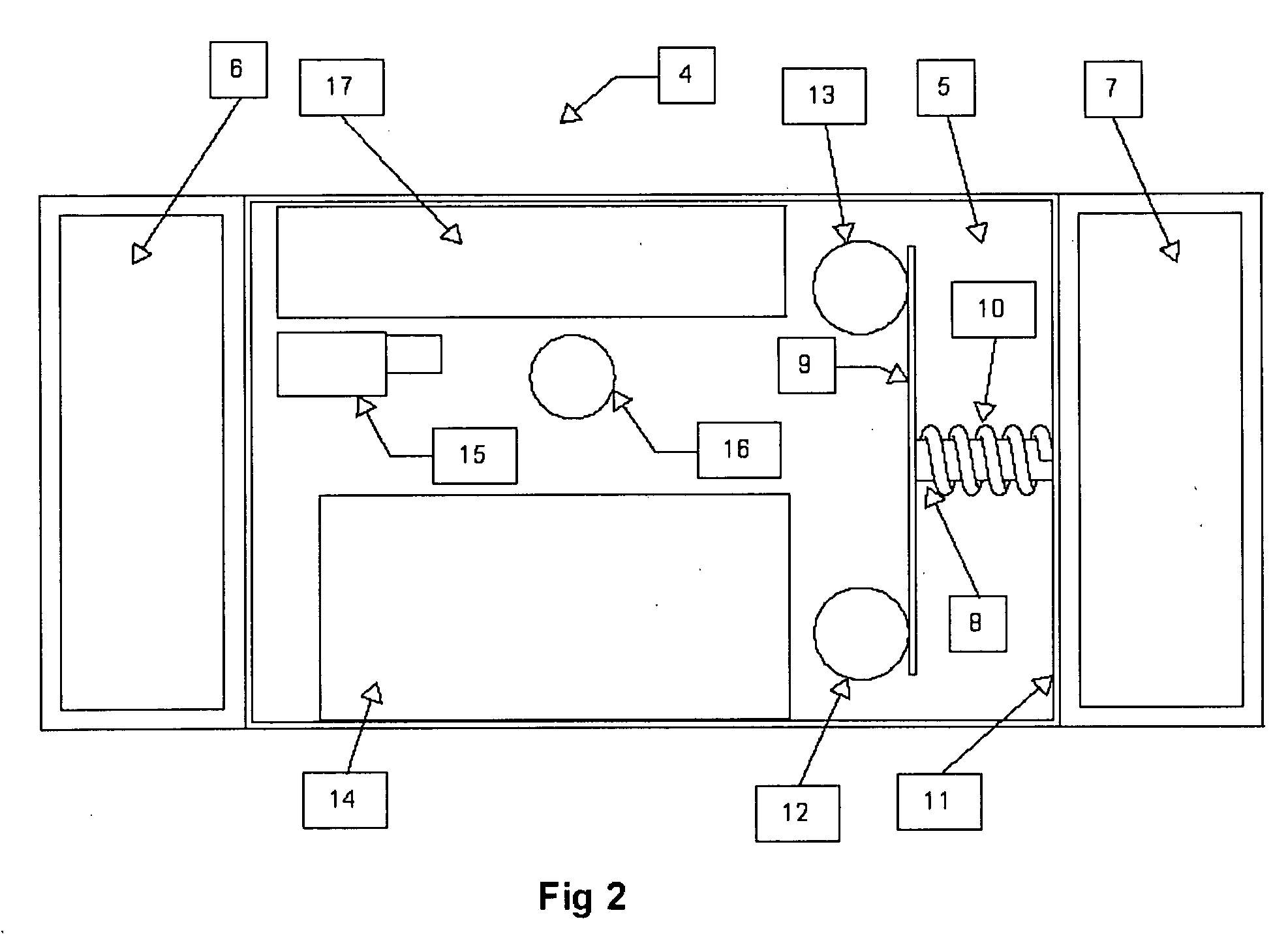Portable Sleep Apnea Monitor
a sleep apnea monitor and portable technology, applied in the field of monitoring sleep apnea, can solve the problems of unreliable units, interfere with normal family life, and not help sufferers in the home setting, and achieve the effect of light weigh
- Summary
- Abstract
- Description
- Claims
- Application Information
AI Technical Summary
Benefits of technology
Problems solved by technology
Method used
Image
Examples
Embodiment Construction
[0061]FIG. 1 refers to a preferred embodiment of the present invention. Here, a belt-sensor unit, generally referred to as A, has a belt 1, attached to a buckle assembly 4. The buckle assembly has a buckle 5, inside which are located a sensor, an evaluator, a vibrator, an alarm unit and a rechargeable battery. These will be explained further while describing FIG. 2 and FIG. 3. On one side of buckle 5, is a slot 6, which is fixedly attached to the buckle. On the other side of buckle 5 is another slot 7, which is movably attached to the buckle. Slot 6 and slot 7 can be of any shape—circular, square, rectangular etc. as long as the belt means can pass through the opening in slot 6 and slot 7.
[0062]Belt 1 is made from a substantially non-elastic, flexible material. One end of belt 1 that is distal to the buckle assembly has a hook and loop fastener. This end will henceforth be referred to as the ‘distal end’. The hook and loop fastener, more commonly known as ‘Velcro’ is numbered 2. The...
PUM
 Login to View More
Login to View More Abstract
Description
Claims
Application Information
 Login to View More
Login to View More - R&D
- Intellectual Property
- Life Sciences
- Materials
- Tech Scout
- Unparalleled Data Quality
- Higher Quality Content
- 60% Fewer Hallucinations
Browse by: Latest US Patents, China's latest patents, Technical Efficacy Thesaurus, Application Domain, Technology Topic, Popular Technical Reports.
© 2025 PatSnap. All rights reserved.Legal|Privacy policy|Modern Slavery Act Transparency Statement|Sitemap|About US| Contact US: help@patsnap.com



